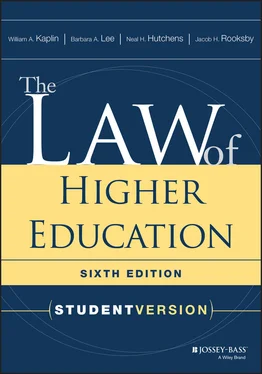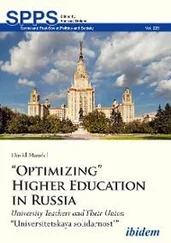Institutions using or considering the use of preventive law will need to determine what working arrangements will best ensure that administrators are alert to incipient legal problems and that counsel is involved in institutional decision making at an early stage. In addition, institutions will also need to delineate carefully the respective roles of administrators and counsel in the decision-making process. Once an institution has worked through these considerations, it should be positioned to engage in a continuing course of preventive legal planning. Legal planning is the process by which an institution identifies and assesses particular situations and implements strategies for avoiding or resolving legal risks it is not willing to assume. In addition to legal considerations, legal planning encompasses ethical, administrative, and financial considerations, as well as the institution's policy preferences and priorities. Sometimes the law may be in tension with institutional policy; legal planners then may seek to devise alternative means for achieving a particular policy objective consistent with the law. Often, however, the law will be consistent with institutional policy; legal planners then may use the law to support and strengthen the institution's policy choices and may, indeed, implement initiatives more extensive than the law would require. Successful legal planning thus depends on a careful sorting out and interrelating of legal and policy issues, which in turn depend upon a teamwork relationship between administrators and counsel.
Section 2.2. Litigation in the Courts
2.2.1 Overview.Of all the forums available for the resolution of higher education disputes (see Sections 1.1and 2.3), administrators are usually most concerned about court litigation. There is good reason for the concern. Courts are the most public and thus most visible of the various dispute resolution forums. Courts are also the most formal, involving numerous technical matters that require extensive involvement of attorneys. In addition, courts may order the strongest and the widest range of remedies, including both compensatory and punitive money damages and both prohibitive and mandatory (affirmative) injunctive relief. Court decrees and opinions also have the highest level of authoritativeness; not only do a court's judgments and orders bind the parties for the future regarding the issues litigated, subject to enforcement through judicial contempt powers and other mechanisms, but a court's written opinions may also create precedents binding other litigants in future disputes as well (see Section 1.4.4).
For these reasons and others, court litigation is the costliest means of dispute resolution that institutions engage in—costly in time and emotional effort as well as in money—and the most risky. Thus, although lawsuits have become a regular occurrence in the lives of postsecondary institutions, involving a broad array of parties and situations (see Section 1.1), administrators should never trivialize the prospect of litigation. Involvement in a lawsuit is a serious and often complex business that can create internal campus friction, drain institutional resources, and affect an institution's public image, even if the institution eventually emerges as the “winner.”
Even a simple lawsuit can become complex and lengthy. It can involve extensive formal pretrial activities, such as depositions, interrogatories, subpoenas, pretrial conferences, and motion hearings, as well as various informal pretrial activities such as attorney-administrator conferences, witness interviews, document searches and document reviews, and negotiation sessions with opposing parties. If the case proceeds to trial, there are all the difficulties associated with presenting a case before a judge or jury: further preparatory meetings with the attorneys; preparation of trial exhibits; scheduling, travel, and preparation of witnesses; the actual trial time; and the possibility of appeals. In order for the institution to present its best case, administrators will need to be intimately involved with most stages of the process. Litigation is also monetarily expensive, since a large amount of employee time must be committed to it and various fees must be paid for outside attorneys, court reporters, perhaps expert witnesses, and so forth. Fortunately, lawsuits proceed to trial and judgment less often than most laypeople believe. The majority of disputes are resolved through settlement negotiations. Although administrators must also be involved in such negotiations, the process is less protracted, more informal, and more private than a trial.
Despite the potential costs and complexities, administrators should avoid overreacting to the threat of litigation and, instead, develop a balanced view of the litigation process. Lawsuits can usually be made manageable with careful litigation planning, resulting from good working relationships between the institution's lawyers and its administrators. Often lawsuits can be avoided entirely with careful preventive planning. And preventive planning, even when it does not deflect the lawsuit, will likely strengthen the institution's litigation position, narrow the range of viable issues in the case, and help ensure that the institution retains control of its institutional resources and maintains focus on its institutional mission. Particularly for administrators, sound understanding of the litigation process is prerequisite to both constructive litigation planning and constructive preventive planning.
2.2.2 Judicial (academic) deference.Another consideration that should play a role in the management of litigation, and in an institution's presentation of its case, is “judicial deference” or “academic deference.” At trial as well as on appeal, issues may arise concerning the extent to which the court should defer to, or give “deference” to, the institution whose decision or other action is at issue. As one commentator has explained:
[A] concept of academic deference justifies treating many university processes and decisions differently from off-campus matters. This formulation is hardly novel. In fact,…many university cases recognize in this way the distinctive nature of the academic environment. Illustrations come from many areas. [Examples] that seem especially apt [include] university based research, personnel decisions, admissions of students, evaluation of student performance, and use of university facilities [Robert O'Neil, “Academic Freedom and the Constitution,” 11 J. Coll. & Univ. Law 275, 283 (1984)].
This concept of academic deference is part of a more general concept of judicial deference that encompasses a variety of circumstances and reasons that indicate when a court should defer to the expertise of some decision maker other than itself. 1 Issues regarding academic deference can play a vital, sometimes even dispositive, role in litigation involving higher educational institutions. Institutions may therefore seek to claim deference at various points in the litigation process. (See generally O'Neil, supra, at 283–89.) Deference issues may arise, for example, with regard to whether a court should recognize an implied private cause of action(see, for example, Cannon v. University of Chicago , 441 U.S. 677, 709–10 (1979)); with regard to the issuance of subpoenas and other aspects of the discovery process (see, for example, University of Pennsylvania v. EEOC , 493 U.S. 182 (1990)); with regard to standards of review and burdens of proof; and with regard to the remedies to be imposed against a losing defendant (see, for example, Kunda v. Muhlenberg College , 621 F.2d 532, 547–51 (3d Cir. 1980)), discussed in Section 5.4.2). Sometimes requests for deference are framed as claims to institutional autonomy; sometimes as “institutional academic freedom” claims (see Section 6.1.7) or faculty academic freedom claims (see Section 6.2); and sometimes as “relative institutional competence” claims, asserting that the institution's or the faculty's competence concerning the matter at issue overshadows that of the court. Sometimes institutions may contend that their claim to deference is constitutionally based—especially when they rely on the academic freedom rationale for deference and seek to ground academic freedom in the First Amendment. At other times, in statutory cases, the deference claim may be based on statutory interpretation; in effect, the institution contends that, under the statute that is at issue, Congress was deferential to higher educational institutions and intended that courts should be deferential as well. And in yet other situations, especially in common law contract or tort cases, the deference claim may be based on public policy or legal policy considerations—for instance, that any court intervention would unduly interfere with the institution's internal affairs, or that vigorous enforcement of legal principles against higher education institutions would not be an effective use of the court's limited resources (see, for example, the discussions of deference in Sections 6.1.3 and 8.1of this book).
Читать дальше












